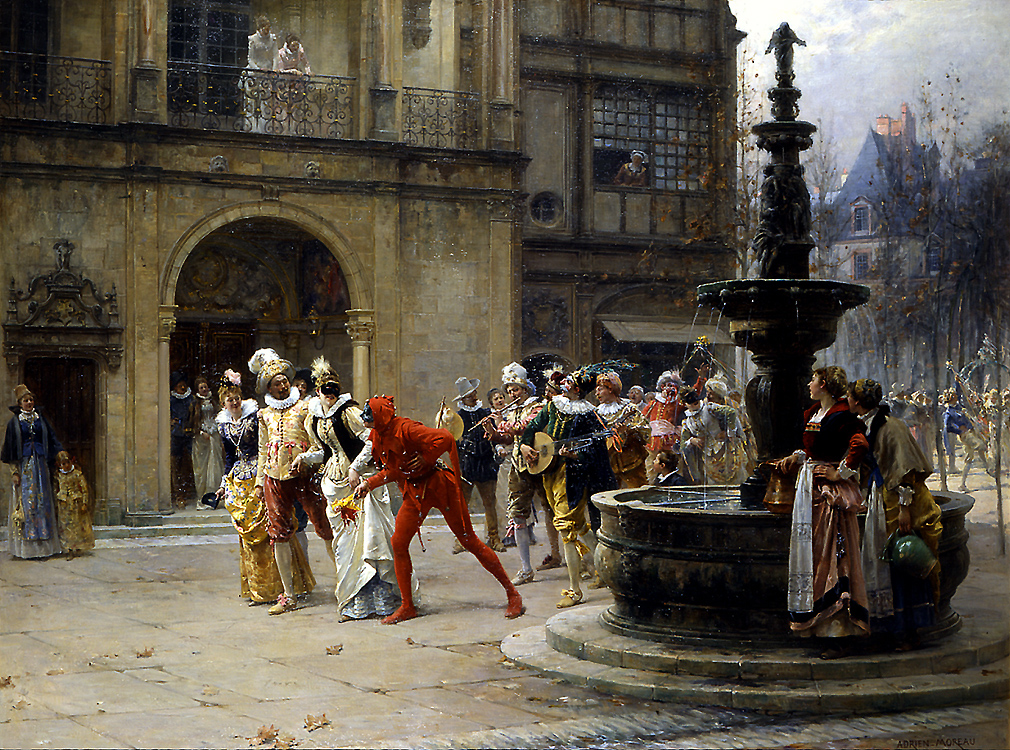|
Une Mascarade au XVII Siecle
ADRIEN MOREAU
(1843-1906)
Une Mascarade au XVII Siecle
Oil on canvas
38 ½ x 52 ½ inches
Signed
Exhibited:
The artist M. Adrien Moreau, though still young, has already won his artistic spurs, his canvases being hors concours in the Salon Exhibitions. A pupil of M. Pils, M. Moreau has, like may other followers, emancipated himself from the traditions of his teaching and displayed his own individuality in his works.…M. Moreau is a verification in himself of the artistic axiom that a true artist, when so willed, can give equally good work in landscape as in figure painting.…Like Van Dyck, Mr. Moreau depicts his men as cavaliers, and gives his grandes dames as much refinement as grace. His touch is microscopic in its details, and yet the accessories are always kept subservient to the theme of the story. M. Moreau is an artist to the very tips of his fingers.
- H.W.S. “Sous La Feuille – (Under the Greenwood),” The Magazine of Art Illustrated (Vol. 3) 1880, pg. 301.
Adrien Moreau was born in Troyes on April 18, 1843. Despite being related to several artists, his family had other aspirations for him besides becoming an artist; his father matched Adrien’s determination to become an artist with his interest in his establishing himself as a lawyer. Eventually, Adrien’s desire won out and he began his first artistic training by apprenticing with a glassmaker in his home city.
But he soon left for Paris to pursue true artistic training in the tradition of the École des Beaux-Arts atelier system. He first worked under Léon Cogniet, but one year later began studying with the great Academic Realist painter Isidore Pils, artists who maintained very-well established ateliers. A classical artist by training, Moreau began exploring the subjects that would occupy him for the remainder of his life – genre and history painting.
Moreau’s debuted at the Parisian Salon in 1868 with Puis ce Prophète s’en alla et un lion le rencontra et le tua (Then Shall This Prophet Go…), a religious subject which “placed him among the ranks of the greatest painters of contemporary genre.” (Joseph Uzanne, Figures Contemporains Tirée de l’Album Mariani, vol. 8, Paris: Libraire Henri Floury, 1903) He followed his debut the next year with a neo-classical painting entitled Néron Chez Les Belluaires (Nero at the House of the Belluaires). Shortly after his Salon exhibitions, the Franco-Prussian war of 1870-71 broke out which forced military attacks into the streets of Paris. During the course of events Moreau’s studio was actually destroyed by an explosion. He did not exhibit again until 1873, when he showed Concert d’Amateurs dans un Atelier d’Artiste (Amateur Concert in an Artist’s Atelier). It was this type of painting that officially established his reputation, and especially found a public that was eager to acquire these nostalgic images. C.H. Stranahan, in A History of French Painting (New York: Scribner’s & Sons, 1888, pg. 347) classified his work as falling “into the class of historical genre, which he, however, paints with a humorous as well as skillful touch.”
Moreau’s historical genre was often translated into a display of elegance and refinement of the upper class, often showing coy women being swooned over by a young man, in a sort of troubadour style of presentation. The late 19th century saw a renewed interest in scenes of the bygone days. Artists such as Meissonier, Madou, Detti, Moreau, Hamza and Stone were among its greatest proponents and the detail and precision of their works were admired by many collectors of the time. People began to look back on the 17th & 18th centuries as an age of elegance, a period in history when, as Meissonier put it “men respected their own persons. The graceful gesture, the harmonious attitude… was not a mere pose. Men in those days were careful about their bearing.”
Collectors from across the globe vied for Moreau’s work and many of his important paintings were acquired by the wealthy Americans of the time. Moreau’s paintings were highly regarded by critics and many were reproduced in important art history books of the period since they conveyed a good idea of what the historical period was believed to represent. One of his paintings of this genre was entitled Un Minuet (The Minuet), which was reproduced in an American publication entitled Famous Paintings of the World (New York: Fine Art Publishing Company, 1894, pg. 169), showing that his images were being disseminated internationally. The author wrote glowingly of the work, writing that:
In a most delicious series of paintings, Adrien Moreau has given us a charming idea of the luxurious life of the French nobility of the sixteenth century. He depicts the pleasures of an idle class, it is true; but idleness and amusement were the privileges of the wealthy and the great of the period from which he has chosen his subjects.…At the same time a proper subordination of mere accessories to the central interest of the picture is carefully maintained. In this festive scene we hardly know whether to admire most of the faces, so full of expression appropriate to the merry occasion; the figures inimitably graceful in action or in repose; or the lovely woodland setting, in which is framed this picture of an aristocratic holiday. The artist fancies persons of quality for the peopling of his canvases, and makes his men gallant cavaliers, and gives to his grandes dames, or great ladies, as much refinement as grace. He is so careful a student of the times he depicts, that we may know that the customs and costumes are precisely what they really were in these courtier days of France.
While today Moreau may be best remembered for these images from the eighteenth century, he also executed a number of compositions showing the peasantry and their life, including aspects of the landscape and environment. “One thing is true of him that can be said of very few artists – he is equally at home in landscape and figure painting; and he bestows equal care on the portrayal of each, neither being disregarded in favor of the other.” (Famous Paintings, pg. 169)
One of these images was his 1876 Salon exhibition, for which he earned his first medal, entitled Le Repos a la Ferme (Repose at the Farm). But he balanced this with another work that depicted life from previous centuries with a second example entitled Une Kermesse au Moyen Age (County Fair in the Middle Ages). This latter entry may have been influenced by his travels through Belgium and Holland which he took this same year. He must have had an opportunity to examine seventeenth-century Dutch painters such as Metzu and Terborch who may have exercised an influence on him (as suggested in Eric Zafran’s French Salon Paintings from Southern Collections, Atlanta: The High Museum of Art, 1982, pg. 150).
He continued exhibiting at the Salon and in 1884 he showed Le Bac (The Ferry), for which Moreau, himself, provided a description – reprinted in Zafran’s French Salon Paintings (pg. 150):
I thought of painting that subject in order to present a cross section of all the social classes of the 17th century, noblemen, soldiers, peasants, and beggars; at that time there existed few bridges, so to cross from one bank to another it was necessary to take the ferry. My study for the landscape was made on the banks of the Seine, close to the Forest of Fontainebleau.
Interestingly, the figures seem as if they are inspired by nineteenth-century France, despite his interest in wanting to portray a scene from the seventeenth century. This problem befell many other artists who wanted to depict a past era, but who had little information to rely on besides current models and fashions. Still, Moreau’s interest in wanting to depict a cross section of the social strata is certainly admirable and firmly places him within the mindset of the nineteenth century artist struggling with such social issues. It also shows that he often did not translate this social concern to many of his other works.
In 1887 Moreau painted and exhibited Une Mascarade au XVII Siècle (A Seventeenth-Century Masquerade) at the Salon and the following comment appeared in Figaro-Salon of that year “Mr. Adrien Moreau remains true to the costume: Une Mascarade au XVII siècle (The Seventeenth-Century Masquerade) is composed with good taste and ingenuity.” He also took part in both the 1889 and 1900 Exposition Universelle, where he earned a second-class medal each time.
During his lifetime, the artist received commissions to illustrate several works, including many reprinted works by French literary masters such as Victor Hugo and especially Voltaire. In 1893, he illustrated Candide by Voltaire, in 1899 Le Secret de Saint Louis of E. Moreau, and in 1900 he illustrated a book on the work of Alphonse Daudet. Other examples abound. For these he did both watercolors and drawings, and showed that he had further talent beyond that of oil painting. Illustration became a feasible means to earn a supplementary income and Moreau was clearly linked with the literary world; ultimately writing a book on the history of the Moreau family, entitled Les Moreau.
By 1892 he had shown himself to be an important part of the Academic traditions of the time and was awarded the Chevalier de la Legion d’Honneur. As an active member of the Salon he continued to live and work in Paris until his death on February 22, 1906.
Moreau’s images popularized the public’s attention for the historical periods of France, where they began to look with absolute reverence. Writers like the de Goncourt’s also supported this notion of a reappraisal of this period of decadent art. Moreau, despite treating other subjects, will remain a master in his own right of this type of art which recalled the luxury and splendor of France’s past eras.
Some examples of Adrien Moreau’s work can now be found in the following museums: Carcassonne – Le soir, Nantes – Propos gallants, La marchande de coco, Le gouter champetre, and Troyes – Dans le parc. |
|
|
INDEX - A VISUAL HISTORY
>
<
|
|
Virtual Exhibition Index
|
next
prev
|
 AIRY, ANNA (1882 - 1964)The Little Mirror AIRY, ANNA (1882 - 1964)The Little Mirror |
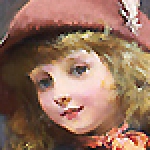 BARBER, CHARLES BURTON (1845 - 1894)Off to School BARBER, CHARLES BURTON (1845 - 1894)Off to School |
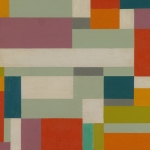 BOLOTOWSKY, ILYA (1907 - 1981)Abstract BOLOTOWSKY, ILYA (1907 - 1981)Abstract |
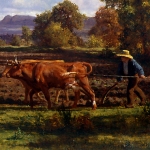 BONHEUR, AUGUSTE (1824 - 1884)Ploughing in the Nivernais BONHEUR, AUGUSTE (1824 - 1884)Ploughing in the Nivernais |
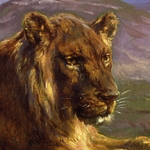 BONHEUR, ROSA (1822 - 1899)Couching Lion BONHEUR, ROSA (1822 - 1899)Couching Lion |
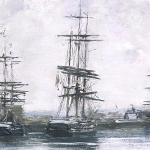 BOUDIN, EUGENE LOUIS (1824 - 1898)La bassin, Deauville BOUDIN, EUGENE LOUIS (1824 - 1898)La bassin, Deauville |
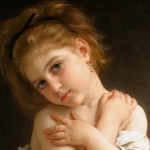 BOUGUEREAU, WILLIAM A. (1825 - 1905)La Frileuse BOUGUEREAU, WILLIAM A. (1825 - 1905)La Frileuse |
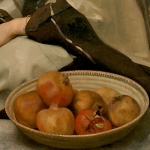 BOUGUEREAU, WILLIAM A. (1825 - 1905)Marchande de grenades (Pomegranate Seller) BOUGUEREAU, WILLIAM A. (1825 - 1905)Marchande de grenades (Pomegranate Seller) |
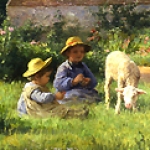 CHAIGNEAU, JEAN F. (1830 - 1906)Le Jardin de l'Artiste CHAIGNEAU, JEAN F. (1830 - 1906)Le Jardin de l'Artiste |
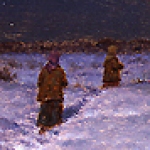 CHOULTSE, IVAN F. (b.1877)Nuit de Mars, Russie CHOULTSE, IVAN F. (b.1877)Nuit de Mars, Russie |
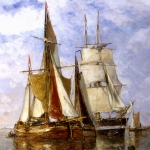 CLAYS, PAUL JEAN (1819 - 1900)Shipping on the Scheldt CLAYS, PAUL JEAN (1819 - 1900)Shipping on the Scheldt |
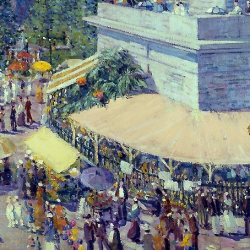 COALE, GRIFFITH BAILEY (1890 - 1950)The Baltimore Flower Mart - 1915 COALE, GRIFFITH BAILEY (1890 - 1950)The Baltimore Flower Mart - 1915 |
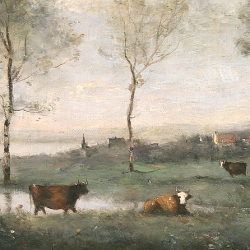 COROT, JEAN-BAPTISTE-CAMILLE (1796 - 1875)Pâturage dans les marais (Souvenir des environs d'Amiens) COROT, JEAN-BAPTISTE-CAMILLE (1796 - 1875)Pâturage dans les marais (Souvenir des environs d'Amiens) |
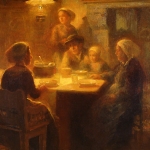 CORTÈS, EDOUARD LEON (1882 - 1969)The Breton Family CORTÈS, EDOUARD LEON (1882 - 1969)The Breton Family |
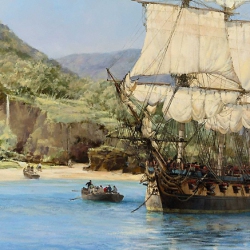 DAWSON, MONTAGUE (1895 - 1973)The Pirate's Cove, Wafer Bay, Cocos Island DAWSON, MONTAGUE (1895 - 1973)The Pirate's Cove, Wafer Bay, Cocos Island |
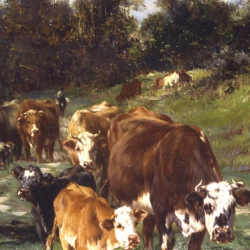 DIÉTERLE, MARIE (1856 - 1935)Troupeau dans un chemin creux DIÉTERLE, MARIE (1856 - 1935)Troupeau dans un chemin creux |
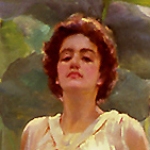 DRUMMOND, ARTHUR (1871 - 1951)Victorian Fantasy DRUMMOND, ARTHUR (1871 - 1951)Victorian Fantasy |
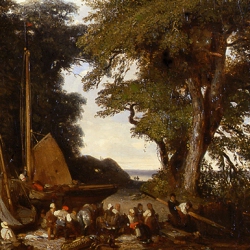 DUPRÉ, JULES (1811 - 1889)Environs de Plymouth DUPRÉ, JULES (1811 - 1889)Environs de Plymouth |
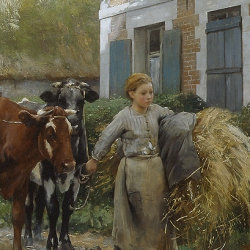 DUPRÉ, JULIEN (1851 - 1910)La rentrée au village DUPRÉ, JULIEN (1851 - 1910)La rentrée au village |
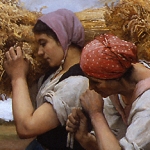 DUPRE, JULIEN (1851 - 1910)Glaneuses DUPRE, JULIEN (1851 - 1910)Glaneuses |
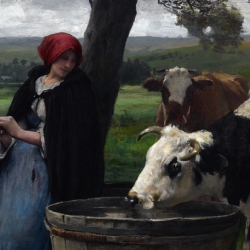 DUPRE, JULIEN (1851 - 1910)La Prairie DUPRE, JULIEN (1851 - 1910)La Prairie |
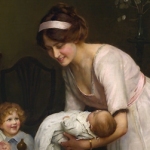 ELSLEY, ARTHUR J. (1860 - 1952)Good Night ELSLEY, ARTHUR J. (1860 - 1952)Good Night |
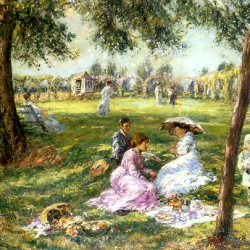 FISHER, R.A., WILLIAM MARK (1841-1923)In the Garden FISHER, R.A., WILLIAM MARK (1841-1923)In the Garden |
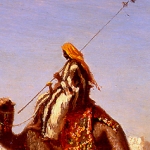 FRERE, CHARLES THEODORE (1814 - 1888)A Caravan Crossing the Desert FRERE, CHARLES THEODORE (1814 - 1888)A Caravan Crossing the Desert |
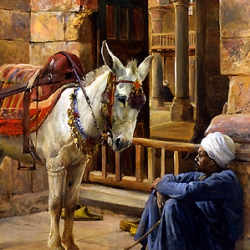 GIRARDET, EUGENE ALEXIS (1853 - 1907)Outside the Mosque GIRARDET, EUGENE ALEXIS (1853 - 1907)Outside the Mosque |
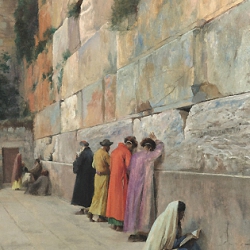 GIRARDET, EUGENE ALEXIS (1853 - 1907)The Wailing Wall GIRARDET, EUGENE ALEXIS (1853 - 1907)The Wailing Wall |
 HERBO, LEON (1850 - 1907)La Charmeuse HERBO, LEON (1850 - 1907)La Charmeuse |
 ISRAELS, ISAAC (1865 - 1934)Dancing at the Moulin de la Galette ISRAELS, ISAAC (1865 - 1934)Dancing at the Moulin de la Galette |
 JOUBERT, LEON (fl.1883 - 1900)Un Coin de Seine a Lavacourt JOUBERT, LEON (fl.1883 - 1900)Un Coin de Seine a Lavacourt |
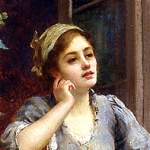 KNIGHT, DANIEL RIDGWAY (1839 - 1924)A Pensive Moment KNIGHT, DANIEL RIDGWAY (1839 - 1924)A Pensive Moment |
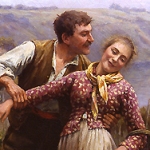 KNIGHT, DANIEL RIDGWAY (1839 - 1924)En Vendanges KNIGHT, DANIEL RIDGWAY (1839 - 1924)En Vendanges |
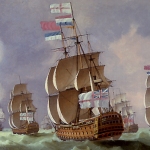 LUNY, THOMAS (1759 - 1837)Engagement Between Sir George Brydges Rodney and the Spanish Squadron, Commanded by Don Juan de Langara, Near Cape St. Vincent, January 16, 1780 LUNY, THOMAS (1759 - 1837)Engagement Between Sir George Brydges Rodney and the Spanish Squadron, Commanded by Don Juan de Langara, Near Cape St. Vincent, January 16, 1780 |
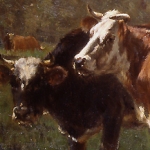 MARCKE DE LUMMEN, EMILE VAN (1827 - 1890)Vaches a Pâture MARCKE DE LUMMEN, EMILE VAN (1827 - 1890)Vaches a Pâture |
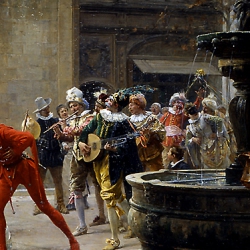 MOREAU, ADRIEN (1843-1906)Une Mascarade au XVII Siecle MOREAU, ADRIEN (1843-1906)Une Mascarade au XVII Siecle |
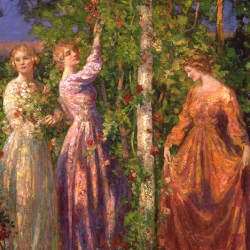 MOSTYN, TOM (1864 - 1930)Gather Ye Rosebuds While Ye May MOSTYN, TOM (1864 - 1930)Gather Ye Rosebuds While Ye May |
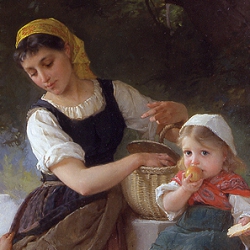 MUNIER, EMILE (1840 - 1895)May I Have One Too MUNIER, EMILE (1840 - 1895)May I Have One Too |
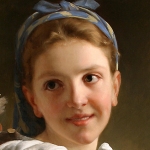 MUNIER, EMILE (1840 - 1895)La retour du marché MUNIER, EMILE (1840 - 1895)La retour du marché |
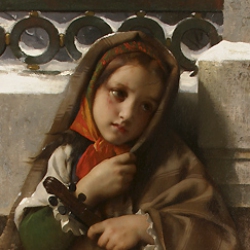 PERRAULT, LEON J.B. (1832 - 1908)Away From Home PERRAULT, LEON J.B. (1832 - 1908)Away From Home |
 PERRAULT, LEON J.B. (1832 - 1908)Sleeping Putto PERRAULT, LEON J.B. (1832 - 1908)Sleeping Putto |
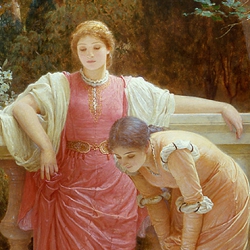 PERUGINI
, CHARLES EDWARD (1839-1918)The Green Lizard PERUGINI
, CHARLES EDWARD (1839-1918)The Green Lizard |
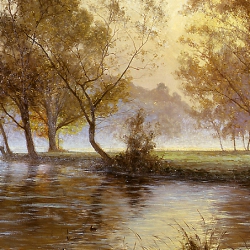 RIGOLOT, ALBERT GABRIEL (1862 - 1932)Soleil Levant dans la Brume RIGOLOT, ALBERT GABRIEL (1862 - 1932)Soleil Levant dans la Brume |
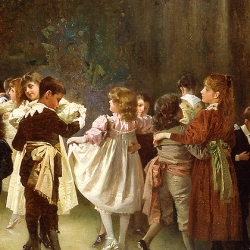 ROSSI, ALEXANDER MARK (FL.1870 - 1903)
May I Have This Dance? ROSSI, ALEXANDER MARK (FL.1870 - 1903)
May I Have This Dance? |
 ROSSI, ALEXANDER MARK (FL.1870 - 1903)Forbidden Books ROSSI, ALEXANDER MARK (FL.1870 - 1903)Forbidden Books |
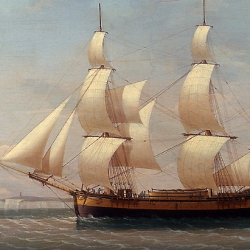 SALMON, ROBERT (1775 - c.1845)
The Estridge off Dover SALMON, ROBERT (1775 - c.1845)
The Estridge off Dover |
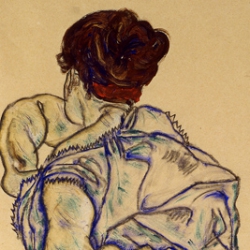 SCHIELE, EGON (1890 - 1918)Semi-nude with Green Stockings from the Back SCHIELE, EGON (1890 - 1918)Semi-nude with Green Stockings from the Back |
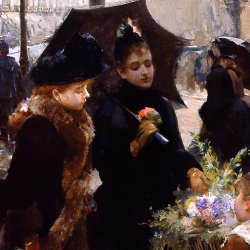 SCHRYVER, LOUIS MARIE DE (1862 - 1942)Après l’averse; - place du Théâtre-Français SCHRYVER, LOUIS MARIE DE (1862 - 1942)Après l’averse; - place du Théâtre-Français |
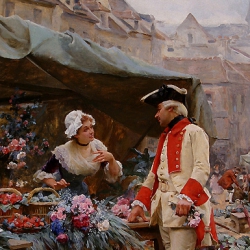 SCHRYVER, LOUIS MARIE DE (1862 - 1942)A Young Man's Fancy SCHRYVER, LOUIS MARIE DE (1862 - 1942)A Young Man's Fancy |
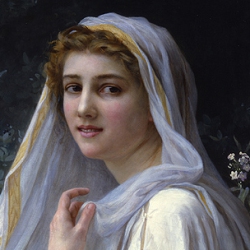 SEIGNAC, GUILLAUME (1870 - 1924)Reflections SEIGNAC, GUILLAUME (1870 - 1924)Reflections |
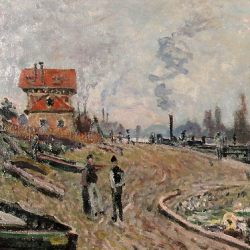 SISLEY, ALFRED (1839 - 1899)La Seine à Suresnes SISLEY, ALFRED (1839 - 1899)La Seine à Suresnes |
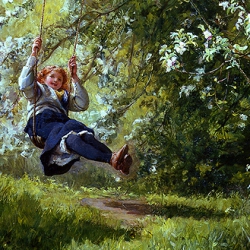 TOPHAM, FRANCIS W.W. (1838 - 1924)Young Girl on a Swing TOPHAM, FRANCIS W.W. (1838 - 1924)Young Girl on a Swing |
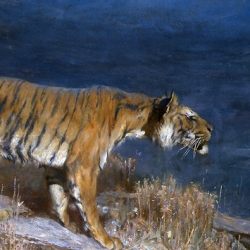 WARDLE, ARTHUR (1864 – 1949)The Deer-Stealer WARDLE, ARTHUR (1864 – 1949)The Deer-Stealer |
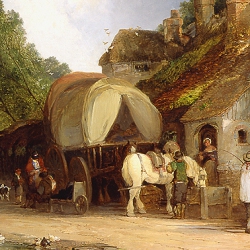 WILLIAMS, EDWARD CHARLES (1807 - 1881)The Old Roadside Inn WILLIAMS, EDWARD CHARLES (1807 - 1881)The Old Roadside Inn |
|
|
